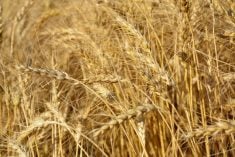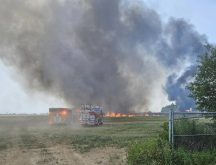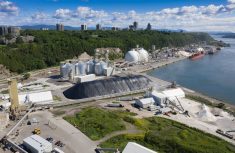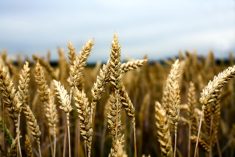Seed uniformity, spacing, depth, row width and other factors contribute to wheat canopy structure and yield.
Dennis Pennington, wheat researcher and extension specialist with Michigan State University, says management practices and technologies designed to optimize planting offer growers significant opportunity.
The main goal is to generate a canopy that maximizes light interception and radiation use efficiency, says Pennington. That improves the plant’s ability to convert water to biomass and yield.
Read Also

New Iridium technology helps block GPS spoofing
A tiny new chip will allow Iridium’s Positioning, Navigation and Timing (PNT) signals to be received much smaller devices, create a backstop against Global Positioning Systems (GPS) spoofing.
Why it matters: Wheat is often the least profitable crop in a corn-soybean-wheat rotation, so there has been more focus lately on growing yield, and profit.
Wheat growers should establish “green area index” canopy growth targets and adjust planting to achieve those targets.
Green area index refers to the total measured leaf and stem area compared to bare ground. At the beginning of stem elongation and growth stage 32, Pennington says 50 per cent coverage (an index of 2) is ideal. At growth stage 39 (when the flag leaf collar has emerged in mid to late May) there should be 95 per cent light interception.
Additionally, the development of first order tillers – the first five produced by the plant – are of primary importance because they acquire water and nutrients directly from roots. Second order tillers rely on the root connections of first order tillers.
Impact of seed spacing
While genetics and planting date play a role, spacing between seeds is the most significant factor affecting tiller development. Lower rates support more tillers and heads. More tillers are not necessarily better for overall yield, though, because lower seeding rates mean fewer total plants.
Striking the right balance between plant populations and tiller number varies by farm, says Pennington. In Germany, growers get excellent results from emphasizing heavier grains and more grains per head, so higher populations are less important.
The shorter growing seasons and different climatic conditions in Michigan and Ontario, however, make it difficult for growers to achieve similar results.
“All the things we do in terms of planting technology are going to affect tiller development,” says Pennington. “You don’t want to develop tillers which won’t survive all the way to grain harvest.”
A similar balance is required for row spacing. Tighter rows might bring better light and radiation capture from a better green area index, but whether a 5, 7.5, or even 10-inch row translates to higher yield can vary.
Pennington says even 10-inch rows produce closed canopies by the onset of the grain filling period in early June. Current research indicates 15-inch rows, in contrast, fail to produce a closed canopy at this stage.
Singulation and
seed placement
Uniform seed placement also lends itself to higher wheat yields, as well as easier fungicide application thanks to more uniform emergence and growth. Conventional seed drills and air seeders leave much to be desired in this regard.
Machinery that can singulate — separate and uniformly plant individual seeds – performs better. Four years of field trials analyzing precision platforms from Horsch and Monosem, for example, brought a five per cent increase in yields despite lower initial stand counts.
Vomitoxin levels were also much lower in precision planted crops, which is attributed to more uniform emergence.
Singulating small cereals like wheat is not a mastered science, and each planter has its own set of challenges. The Horsch planter was fast but required seeds be sized to prevent clogs. The Monosem platform did not have this problem but required more frequent filling and had to operate at slower speeds. Pennington says perfect singulation technology remains elusive.
If a conventional soybean drill is the only option available, Pennington says planting at 10-inch rows brings only a marginal yield drop and 15-inch rows bring a comparatively significant reduction.
Regardless of equipment used, he says keeping track of yields and comparing management practices is critical.
“If you don’t have some targets to shoot for, how do you know if you change your population, change row spacing, invest in precision planting technology? How do you know which of these components you are impacting and which one is going to contribute the most to yield?”















